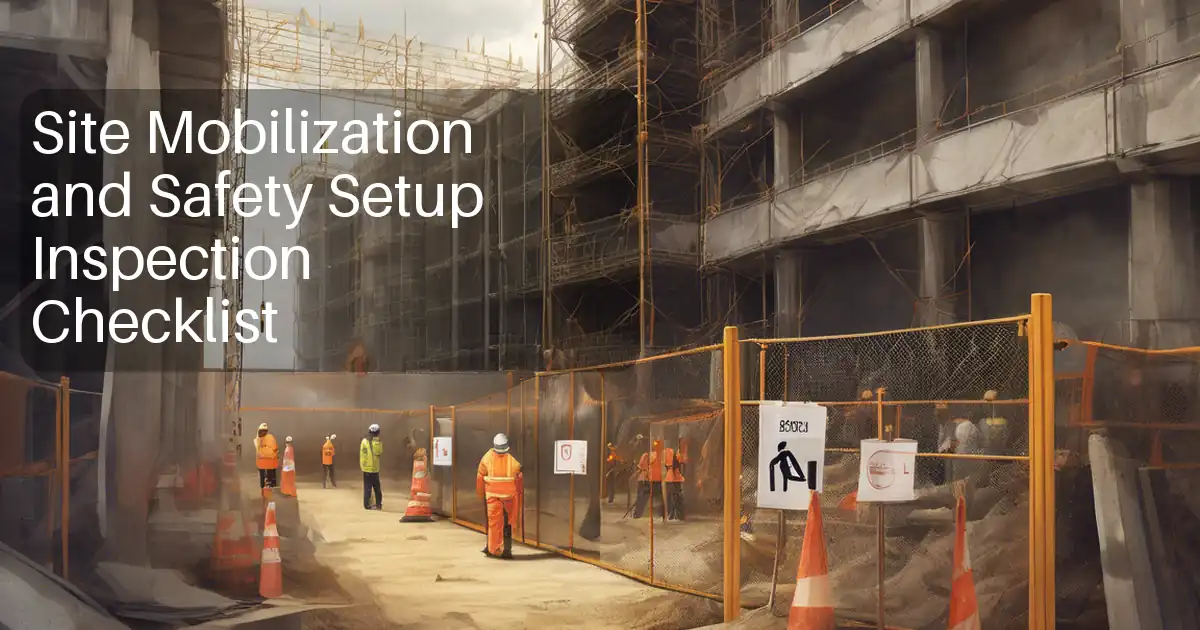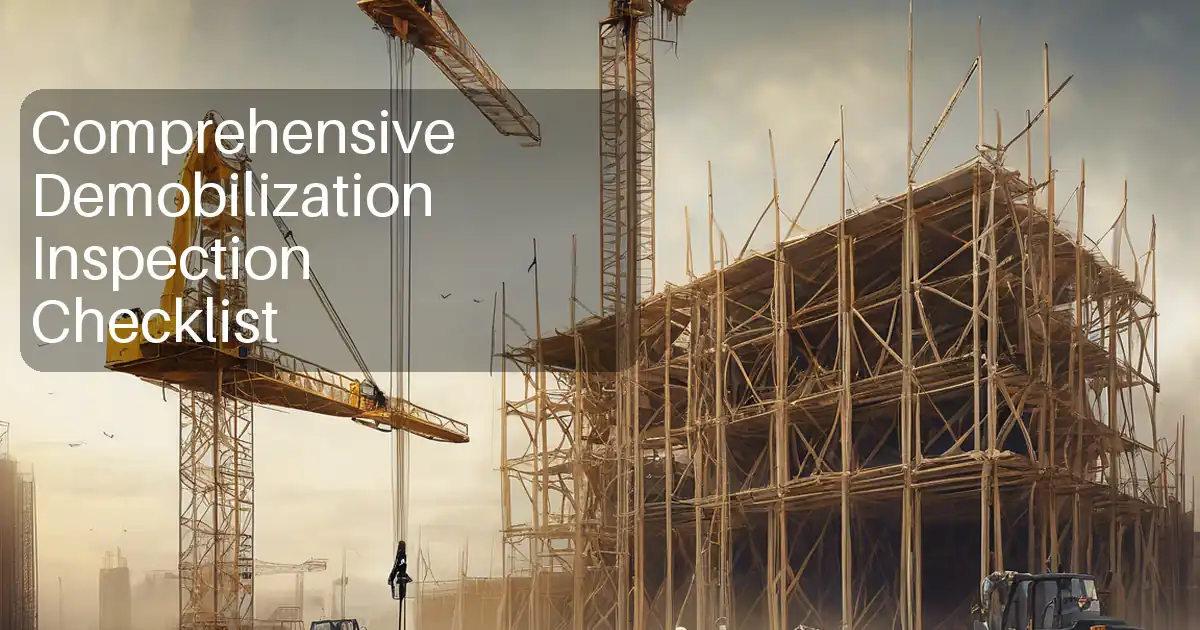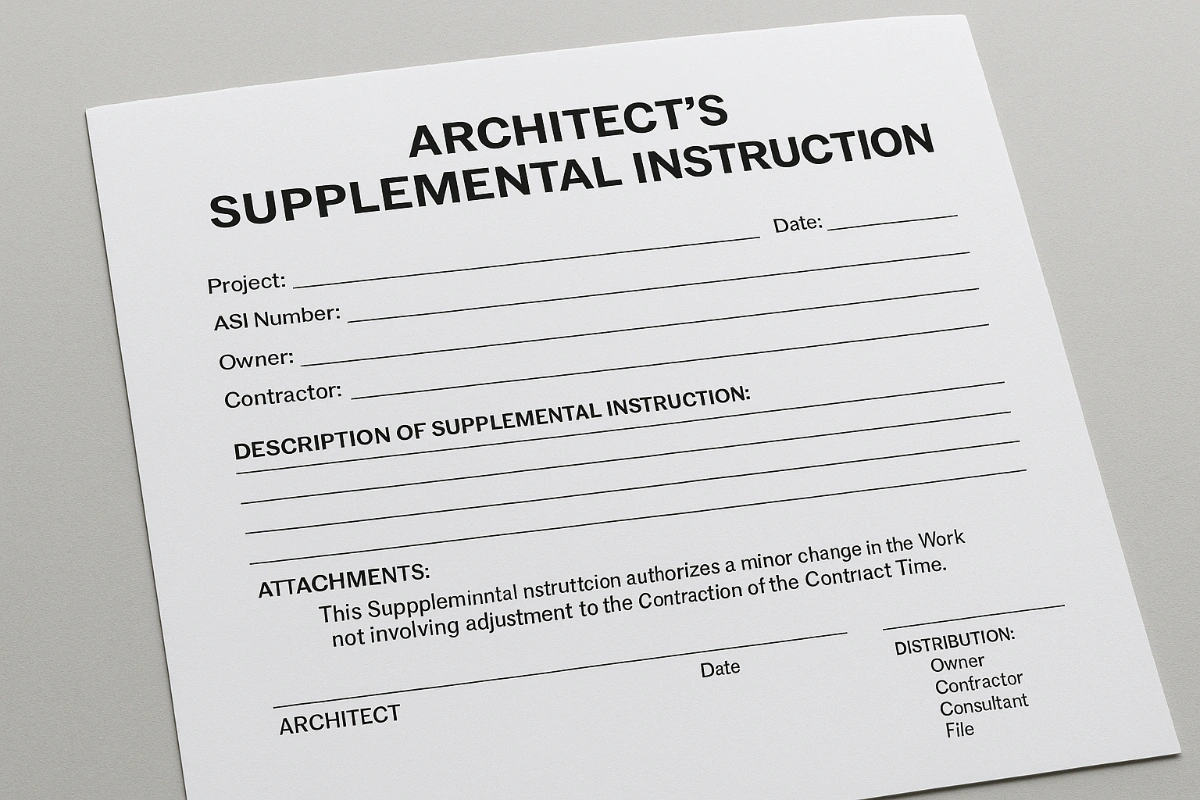Site Instructions in Construction: Legal Meaning, Risks, and Templates
What is a Site Instruction?
A site instruction — also known as an Engineer’s Instruction (FIDIC), Architect’s Instruction (JCT), Project Manager’s Instruction (NEC), Architect’s Supplemental Instruction (ASI) (AIA), or Work Order/Field Order (Government works) — is a formal written directive issued during the execution of a construction project by the Engineer, Architect, or Project Manager to the contractor.
It directs how certain aspects of the work should be carried out and is contractually binding, meaning the contractor must comply — but it can also trigger entitlement to additional time or cost under the contract.
Many engineers and architects focus on the technical side and underestimate the legal impact of their communications. They sometimes believe that unless they issue the official instruction form, the message is informal. In reality, any written directive that tells the contractor what to do may be legally treated as an instruction, even if it appears in:
-
Comments on shop drawings
-
Email correspondence
-
Markups on drawings
💡 Legal Tip: If you write it, it might be an instruction. Treat every technical directive as potentially binding.
Legal Definitions by Contract Type
FIDIC
Under the FIDIC Red Book, Clause 3.3 (Instructions of the Engineer) empowers the Engineer to issue instructions necessary for execution.
If the instruction constitutes a variation, it must be processed under Clause 13 (Variations and Adjustments).
The contractor must comply immediately but may submit a notice of claim under Clause 20 if the instruction impacts time or cost.
💡 Legal Tip: In FIDIC, compliance is mandatory — claims are handled afterwards.
JCT
In JCT contracts, the Architect’s/Contract Administrator’s Instruction (AI/CAI) can change the work, materials, or sequence. Variations resulting from instructions entitle the contractor to adjustments in time and/or money.
NEC
In NEC contracts, the Project Manager’s Instruction (PMI) changes the Works Information and is treated as a Compensation Event. This requires prompt assessment and agreement on price and program changes.
AIA
The American Institute of Architects (AIA) differentiates between:
-
Architect’s Supplemental Instruction (ASI) — for minor changes with no impact on cost or time.
-
Construction Change Directive (CCD) — for changes that affect cost or time, even if the adjustment is not yet agreed.
💡 Legal Tip: Under AIA, ASIs are inherently “conditional” — any cost/time impact should be processed as a CCD or Change Order.
Government Works Contracts
Public works contracts often authorize Work Orders or Field Orders from the Engineer or Contracting Officer. If these change the scope, they must be processed as a formal contract modification (US GAO).
When is Something Legally Considered an Instruction?
Even without the official form, a directive is likely an instruction if it tells the contractor what to do. Examples:
-
Shop drawing comments — “Increase wall thickness to 250 mm.”
-
Submittal comments — “Use approved brand X cement.”
-
MoM action items — “Contractor to install safety net by Friday.”
-
Emails — “Proceed with excavation in Zone B.”
-
Inspection reports/NCRs — “Remove and replace defective slab.”
Contractors often log these to support variation claims.
Common Triggers for Site Instructions
Site instructions may arise from:
-
Contractor’s site clarification or RFI.
-
Non-conformance reports requiring remedial action.
-
Safety concerns needing immediate measures.
-
Design coordination issues between trades.
-
Unforeseen site conditions (e.g., buried utilities).
-
Owner convenience — changes in design/scope for preference rather than necessity.
-
Nominated subcontractors — instructing the contractor to appoint a specified subcontractor.
-
Alternative proposals from the contractor.
💡 Legal Tip: Even “owner convenience” changes are instructions — and may trigger variation entitlements.
Conditional Instructions
A conditional instruction might say:
“Proceed only if this causes no additional cost or delay — otherwise disregard.”
While this appears in practice, especially under AIA ASIs, it’s problematic in other contracts.
Risks
-
Ambiguity over who decides if there’s impact.
-
Possible delays if the contractor hesitates.
-
Under some contracts (like FIDIC), it contradicts the “must comply” principle.
FIDIC Reality
Under FIDIC Clause 3.3, the contractor must comply with instructions immediately, regardless of impact.
If they believe it affects time or cost, they submit notice under Clause 20 and claim afterwards.
A “conditional” wording doesn’t remove the contractor’s right to claim — it can just cause confusion.
Better approach:
-
Use the variation proposal process (Clause 13.3) to assess impact first.
-
Or issue the instruction and handle claims through the contract’s claims procedure.
The Contractor’s Perspective – Why Informal Instructions Are Gold
From the contractor’s viewpoint, every instruction is potential claim material.
Engineers and architects sometimes overlook the contractual force of informal directions — but a redline on a drawing or a note in MoM can support a claim for extra time or additional payment.
Best Practices for Issuing and Tracking Site Instructions
-
Reference the contract clause for every instruction.
-
Number and log all instructions — even if issued via MoM, drawing comment, or email.
-
Confirm verbal directions in writing within 24 hours.
-
Link instructions to variations/change orders where relevant.
-
Maintain a unified instruction register covering all mediums.
💡 Legal Tip: A complete instruction log protects both the Employer and Contractor in disputes.
Free Site Instruction Form Templates
Download ready-to-use forms:
-
AIA-style Architect’s Supplemental Instruction (ASI) (PDF, Excel, webP)
-
AIA-style Construction Change Directive (CCD) (PDF, Excel)
Each includes:
-
Contract clause reference
-
Reason for instruction
-
Cost/time impact
-
Signature & acknowledgment fields
References & Further Reading
-
FIDIC Official Website – Contract standards including the Red, Yellow, and Silver Books.
-
NEC Contracts – Guidance on Project Manager’s Instructions and Compensation Events.
-
AIA – American Institute of Architects – Details on ASIs and CCDs.
-
JCT Contracts – Information on Architect’s Instructions.
-
US Government Accountability Office – Contract modifications in public works.
-
Managing Variation Orders in Construction Projects – Quollnet guide on variation orders.











